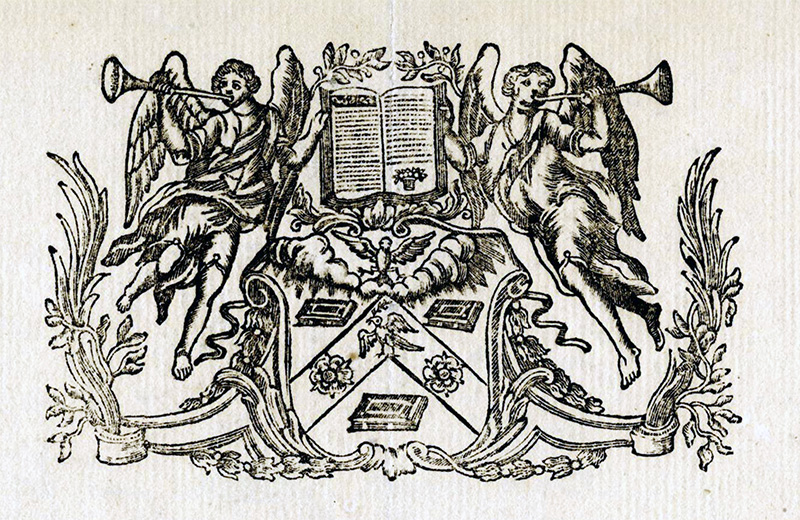The Stationers’ Company
Pat Rogers, University of South Florida
June 2023
One of the ancient companies of the City of London, the Stationers’ Company was first established as a guild in 1403 and took its name from the scribes and manuscript illustrators who had set up their “stations” or stalls around St. Paul’s Cathedral. In the following century a new cohort of printers became a dominant sector of the trade and joined the body. In 1557 the Guild was granted a Royal Charter and was admitted as a “Worshipful” livery company. Its base since 1607 has been situated in Ave Maria Lane, close to St. Paul’s Cathedral. The premises were destroyed in the Fire of 1666 and their replacement badly damaged in the Blitz of 1940. However, the Company has managed to continue its operations from this site and today makes its precious archive available to students of the book trade.
During the Tudor and Stuart eras, the Company acquired under its Charter some important privileges, accorded to them by the Crown as a means of regulating the ever-growing flood of printed materials. The most significant of these was a monopoly on publications, which involved the registration of new works in an official Register. It was not until as late as 1923 that publishers were freed from this requirement. For well over a century, this gave printers an almost unfettered control over the supply of books, a situation which remained in place until the passage of a Copyright Act in 1710. The new measure gave legal protection to authors for the first time. However, the measure was drafted in a way that allowed publishers (mostly) and printers to retain a strong hold by purchasing the rights, and though the Company never regained the kind of dominance it had formerly enjoyed, its members were quickest to seize the opportunities afforded by the Act.
One of the main planks of the Company’s continued success belonged to what was known as the English Stock, a highly profitable joint stock publishing business whose shares were owned by members of the company. The most valuable rights here were those attached to almanacs, cheap repositories of knowledge as well as fanciful astrological guides, which for many generations sold up to half a million copies annually. This was an extraordinary commercial advantage to the Company. As William St. Clair has written, “In exchange for its continuing cooperation with the state, the main collective institution of the book industry was thus granted the right to take a rent every year in perpetuity from all of the wide range of economic activities and religious and cultural practices which depended upon participants having access, each year, to the printed information which almanacs contained.” Some of the profits were made over to the poor. But those excluded from this moneymaking enterprise naturally objected to these restrictive practices, and tried with occasional success to evade their grip. Even after almanacs ceased to be subject to this monopoly in the same form when perpetual copyright was in effect abolished by the courts in 1773–74, members of the Company contrived to retain some of their hold on the free market.
The Stationers’ Company remains a respected institution, carrying out worthwhile functions in support of the modern communications industry, and serving its traditional charitable role. It no longer attempts to direct the course of literary production as it once did: nor would this be possible in an age of self-publishing, print on demand, ISBNs, blogs and social media. Its historic importance is undiminished by that fact.
